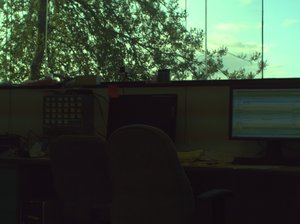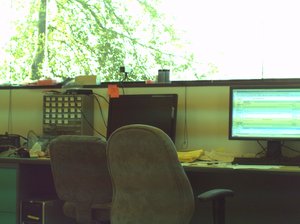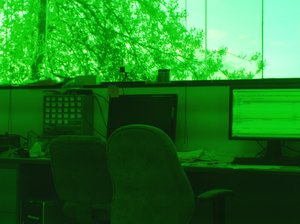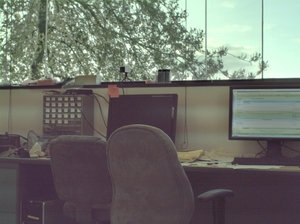Difference between revisions of "JP4 HDR"
From ElphelWiki
(→Reference:) |
|||
| (9 intermediate revisions by the same user not shown) | |||
| Line 1: | Line 1: | ||
| − | == JP4 HDR == | + | == HDR JP4 == |
| + | Bayer pattern look like this | ||
| + | {| class="wikitable" | ||
| + | |- | ||
| + | | bgcolor="red"|R | ||
| + | | bgcolor="green"|G1 | ||
| + | | bgcolor="red"|R | ||
| + | | bgcolor="green"|G1 | ||
| + | | bgcolor="red"|R | ||
| + | | bgcolor="green"|G1 | ||
| + | |- | ||
| + | | bgcolor="green"|G2 | ||
| + | | bgcolor="blue"|B | ||
| + | | bgcolor="green"|G2 | ||
| + | | bgcolor="blue"|B | ||
| + | | bgcolor="green"|G2 | ||
| + | | bgcolor="blue"|B | ||
| + | |- | ||
| + | | bgcolor="red"|R | ||
| + | | bgcolor="green"|G1 | ||
| + | | bgcolor="red"|R | ||
| + | | bgcolor="green"|G1 | ||
| + | | bgcolor="red"|R | ||
| + | | bgcolor="green"|G1 | ||
| + | |- | ||
| + | | bgcolor="green"|G2 | ||
| + | | bgcolor="blue"|B | ||
| + | | bgcolor="green"|G2 | ||
| + | | bgcolor="blue"|B | ||
| + | | bgcolor="green"|G2 | ||
| + | | bgcolor="blue"|B | ||
| + | |- | ||
| + | | bgcolor="red"|R | ||
| + | | bgcolor="green"|G1 | ||
| + | | bgcolor="red"|R | ||
| + | | bgcolor="green"|G1 | ||
| + | | bgcolor="red"|R | ||
| + | | bgcolor="green"|G1 | ||
| + | |- | ||
| + | | bgcolor="green"|G2 | ||
| + | | bgcolor="blue"|B | ||
| + | | bgcolor="green"|G2 | ||
| + | | bgcolor="blue"|B | ||
| + | | bgcolor="green"|G2 | ||
| + | | bgcolor="blue"|B | ||
| + | |} | ||
| + | Some sensors have possibility to set independed scale to G1 and G2. | ||
| + | Considering that the accessible optics does not give the full permission of a sensor resolution, it can be used for increase in a dynamic range of a image sensor. | ||
| + | |||
| + | {| border="0" cellpadding="2" | ||
| + | |- | ||
| + | | [[Image:Hdr02 all gain1.jpeg|thumb|150px nonHDR image with global analog gain=1]] || [[Image:Hdr02 all gain16.jpeg|thumb|150px nonHDR image with global analog gain=16]] || [[Image:Hdr02.jpeg|thumb|150px HDR source image with gained G2]] || [[Image:Hdr02 processed.jpg|thumb|150px processed HDR image]] | ||
| + | |- | ||
| + | |} | ||
| + | |||
| + | Matlab have interesting [http://www.mathworks.com/access/helpdesk/help/toolbox/images/makehdr.html possibility] for creating HDR from series of LDR images. | ||
| + | |||
| + | We can easy make script for online & one click make HDR from series of images with different exposure times. | ||
| + | |||
| + | === Reference: === | ||
| + | * [http://pfstools.sourceforge.net/index.html pfsTools] | ||
| + | * [http://scanline.ca/exrtools exrTools] | ||
| + | * [http://cvtool.sourceforge.net/index.html cvTool: GPU accelerated tools] | ||
| + | * Tone Mapping [http://www.mpi-inf.mpg.de/resources/tmo algos]. With image/video samples. | ||
| + | * [http://www.mpi-inf.mpg.de/resources/tmo/NewExperiment/TmoOverview.html Gallery of Reference Tone Mapped Images] | ||
| + | |||
| + | ---- | ||
| + | |||
| + | * [http://www.stuckincustoms.com/ nice HDR blog] | ||
Latest revision as of 10:34, 3 May 2009
HDR JP4
Bayer pattern look like this
| R | G1 | R | G1 | R | G1 |
| G2 | B | G2 | B | G2 | B |
| R | G1 | R | G1 | R | G1 |
| G2 | B | G2 | B | G2 | B |
| R | G1 | R | G1 | R | G1 |
| G2 | B | G2 | B | G2 | B |
Some sensors have possibility to set independed scale to G1 and G2. Considering that the accessible optics does not give the full permission of a sensor resolution, it can be used for increase in a dynamic range of a image sensor.
Matlab have interesting possibility for creating HDR from series of LDR images.
We can easy make script for online & one click make HDR from series of images with different exposure times.
Reference:
- pfsTools
- exrTools
- cvTool: GPU accelerated tools
- Tone Mapping algos. With image/video samples.
- Gallery of Reference Tone Mapped Images



